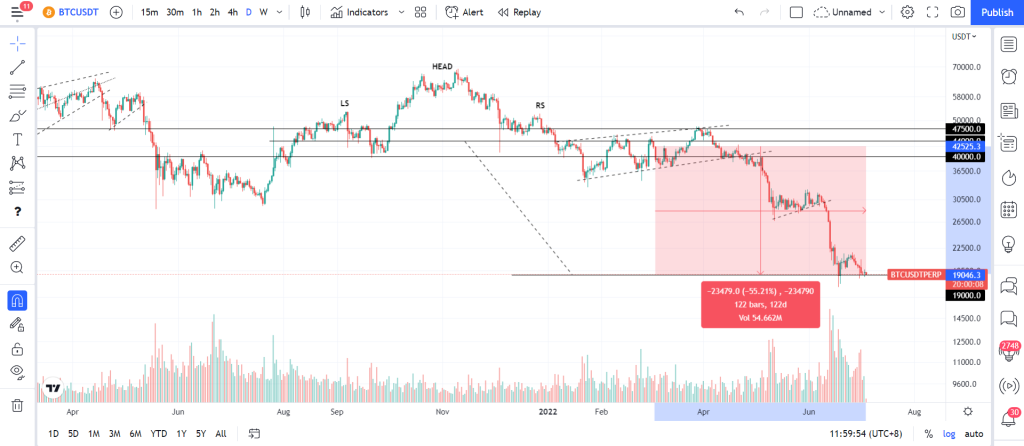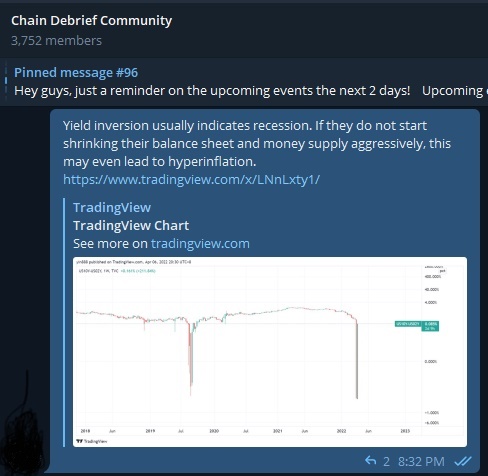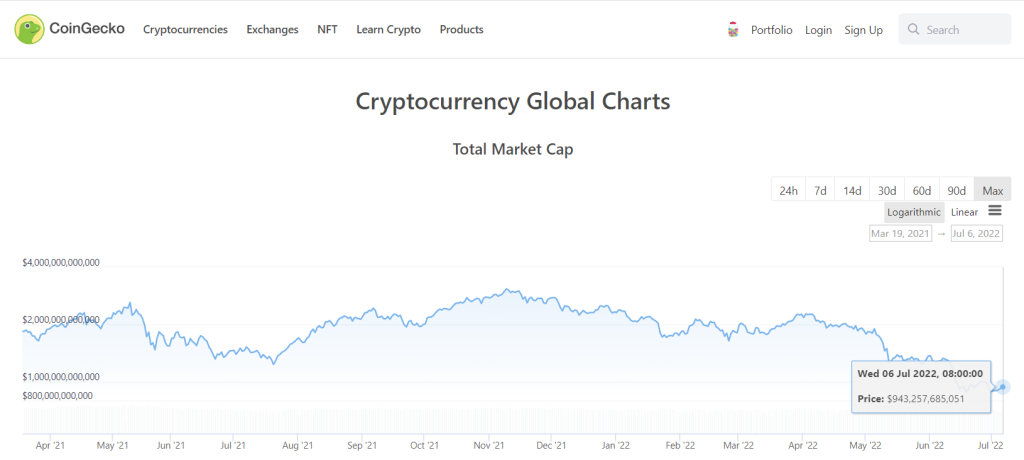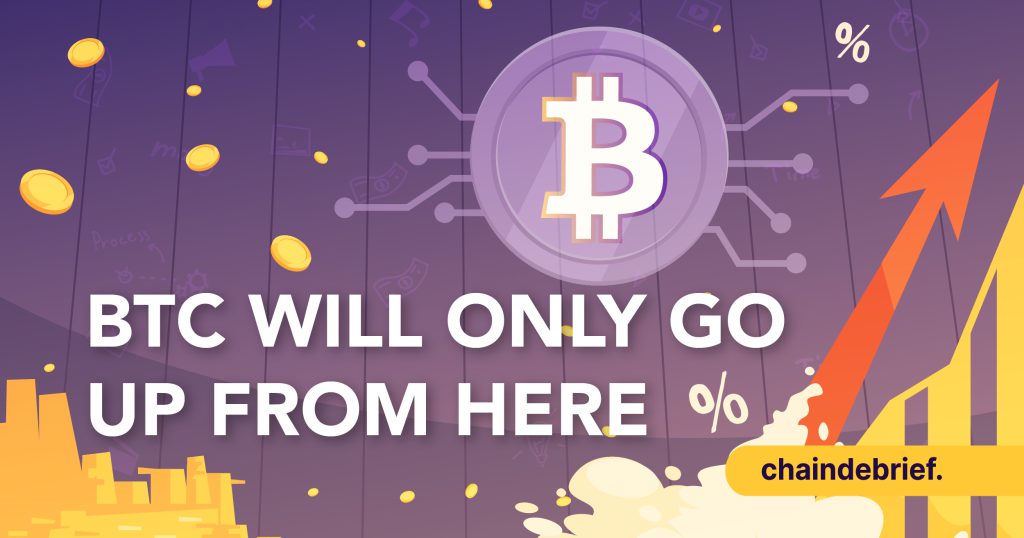Crypto. Bitcoin. You haven’t heard these words as frequently anymore. Just 9 months ago, the situation was completely different – it was discussed widely and avouched by the masses that it would be the best investment ever.
Well, a lot has happened since. For the worse of course.
The cryptocurrency market continues to ooze pessimism with plenty of analysts predicting that the price of Bitcoin has more room to fall.
“Just how low will Bitcoin go?” has been the question on everyone’s mind.
Most crypto participants have gone from ‘trying to earn a quick buck’ last year to being a ‘long-term investors’ this year as they do not want to close their investment at a loss. Some have gone to the extent of deleting their crypto apps.
So what and why has it gone so wrong?
The implication of Covid-19 on crypto
Let me give a quick rundown on what has happened since Covid-19 took place.
In March 2020, World Health Organisation declared the novel coronavirus (Covid-19) outbreak a global pandemic. Ever since then, we have been on a rollercoaster of a ride, especially in the crypto market.
The Federal Reserve (FED) had to print money to stimulate economic growth. The FED gave out payments in the form of stimulus checks of which more than USD $1T made its way into personal bank accounts.
Inflation is a normal and natural side effect of an economic expansion. As businesses grow, they have the ability to hire more workers which leads to a decrease in unemployment. As such, households now have more money to spend. Thus, demand for goods and services increases and in turn causes prices to rise. As the value of assets and consumer goods increases, people become richer.
Due to a zero-interest rate policy i.e. opportunity cost of holding cash is low, consumers begin taking out more loans to increase their spending. This became a loop; demand rose continuously leading to higher inflation.
Prices soon began proliferating across the entire economy, and not long after, inflation was ascending at its fastest rate in 40 years. By the time the FED realises it, it was too late.
Right now, the FED is frantically trying to increase interest rates and shrink its balance sheet to tame runaway inflation.
What’s next?
As interest rates increases, loans become more expensive and less attractive to take on. Demand for assets and consumer goods decreases as people have lesser money to buy them. Instead, investors will be left with no choice but to sell their risky assets. Their net worth decreases as assets start to the tank which leads to more panic in the market and a broader market sell-off as they fear it may be worthless in future.
Households will use the funds from their sale to repay the high-interest loans. There will now be lesser money to purchase goods and because of that, companies will experience a decline in revenue. More and more companies will start to go bankrupt as no one is buying their goods. These companies begin laying off employees as they are not able to afford their wages. People lose jobs and unemployment skyrockets causing a downturn in economic activity.
Is inflation really the only problem?
Many see inflation itself as the problem and that the FED tightening will make things better when inflation goes away, but I beg to differ.
Firstly, prices rise when the number of spending increases by more than the quantities of goods and services sold increase.
Secondly, the way the FED fights inflation is by taking money away from consumers and companies to reduce their spending. By raising interest rates, the FED takes away buying power as it increases the amount of money required to repay interest and decreases the amount of money that goes toward spending.
While tightening reduces inflation as it results in people spending lesser than before. However, it does not make things better because buying power is now reduced.
The only way to raise living standards over the long term is to increase productivity and central banks are unable to do so. Central banks cannot significantly increase productivity growth over a 10-year horizon, except perhaps by promoting macroeconomic stability.
Are we in for stagflation?
In my opinion, there isn’t really anything that the FED can do to fight inflation without creating weakness in the economy.
With enormous debt of assets and liabilities that are projected to increase due to the continued selling of government debt, it is likely that the private credit growth will contract which further weakens the economy.
Over the long run, the FED will opt for a middle course in monetary policy that will likely result in stagflation.
My prediction in the past 4 months
4 months ago, I wrote an elementary article about how rising interest rates will affect the crypto market which I felt was neglected by crypto investors as ‘it did not matter’.
I gave fundamental reasons as to why I see the financial markets, especially crypto taking a big hit.
On the technical analysis side of things, I pointed out that Bitcoin formed a Head and Shoulder pattern with a target of USD $19,000 when it was trading around USD $42,000. At the time of writing, Bitcoin has done just that and is down 55% since.
I am expecting the current level to hold for the near future. This means that we could see a mini relief rally back up to USD $25,000 before the next big wave of selling resume.

Many thought it was impossible as the ‘lowest that BTC could possibly go’ was the previous bull market high and that ‘it will never go below it’.
Influencers and investors spoke with aplomb despite warning signs of a big collapse on the brink.
In early April, I pointed out in the community chat of a yield curve inversion, a relatively reliable recession indicator in the modern era.

Well, here we are now.
What’s next for the crypto market?
We’re seeing the financial aftershocks happen before the big event.
The crypto market has been experiencing a stupendous yet unsurprising slump ever since the start of the year.
As of today, the total market cap is down 69% from its all-time high of USD $3T and is currently trading around USD $940B.

In my opinion, I believe there is much more blood to come for the crypto market.
The crypto market has never seen a recession and we will be in the unchartered territory if it does happen. I stand firm on my prediction I made 4 months back that we will see under USD $10,000 for Bitcoin.
Closing thoughts
In summary, I think we could be in for a long drought in the crypto market. It is very possible that Bitcoin may fall to levels unanticipated before. But, this is also the best time to buy in if you truly believe in it. As the legendary investor Warren Buffet says “be fearful when others are greedy, and greedy when others are fearful”.
The way I see it is that we will only see a bottom and turn-around some time in 2024/2025. Until then, strap up and work-2-earn.
I believe the narrative for the next bull run will be different with a more efficient market i.e. lesser shitcoins, meme projects and tokens with zero utility.
Take this time to sharpen your edge and come out on top the next time round. WAGMI.
[Editor’s Note: This article does not represent financial advice. Please do your own research before investing.]
Featured Image Credit: Chain Debrief



































